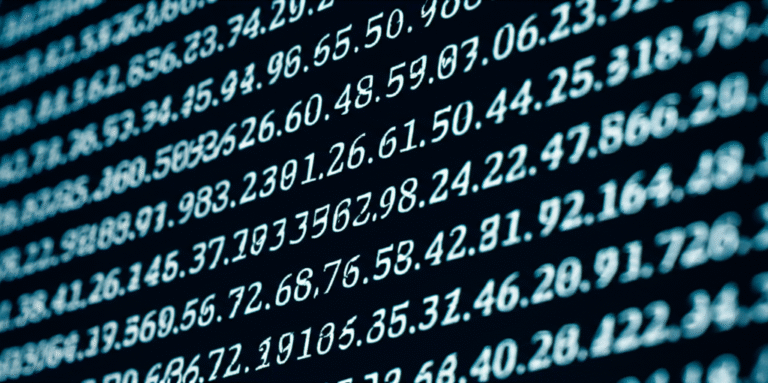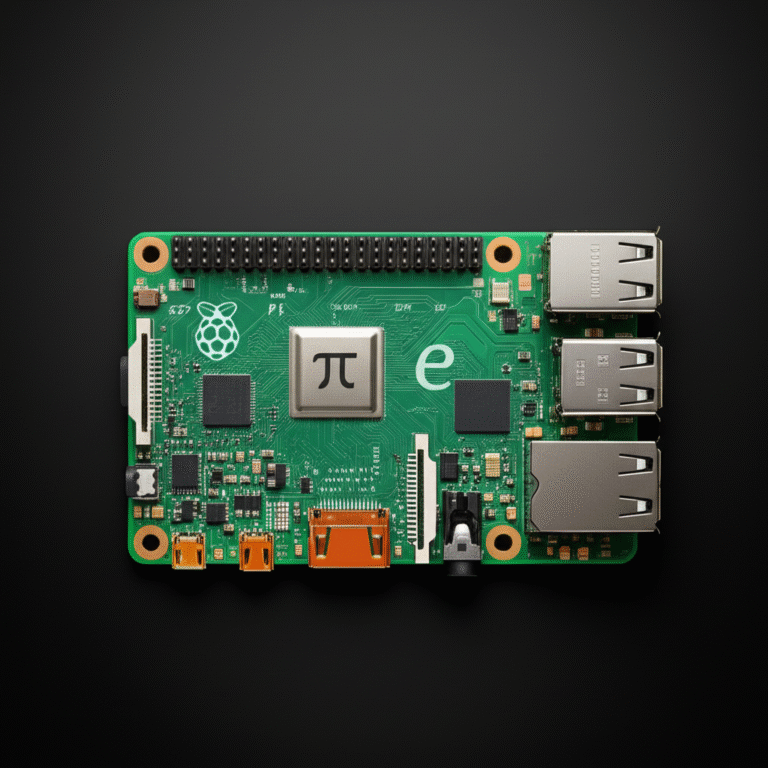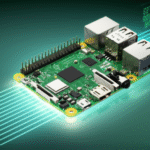Support our educational content for free when you purchase through links on our site. Learn more
What Are the First 1000 Digits of Pi? Copy & Paste Ready! 🎉
Ever wondered what the first 1000 digits of pi look like, and how you can easily copy and paste them without losing a single decimal? You’re in the right place! Whether you’re a student memorizing digits for Pi Day, a programmer testing precision on your Raspberry Pi, or just a math enthusiast hungry for some numerical magic, we’ve got you covered.
Did you know that memorizing just 15 digits of pi is enough to calculate the circumference of the observable universe with atomic precision? Yet, the allure of the first 1000 digits lies in their endless mystery and practical uses—from coding challenges to artistic projects. Stick around, because later we’ll share expert tips on flawlessly copying and verifying these digits, plus some fun ways to use them that might surprise you!
Key Takeaways
- Pi’s first 1000 digits are easy to copy and paste if you use plain-text sources and avoid formatting traps.
- Most practical applications only need a handful of decimals, but the first 1000 digits fuel education, programming, and creative projects alike.
- Verifying the accuracy of pi digits is crucial—we provide checksum methods and trusted online tools.
- Beyond 1000 digits, pi’s infinite nature invites endless exploration, from million-digit archives to record-breaking computations.
- Pi isn’t just math—it’s art, culture, and a gateway to computational fun, especially on platforms like Raspberry Pi.
Ready to dive deep into the digits and discover how to wield pi like a pro? Let’s get started!
Table of Contents
- ⚡️ Quick Tips and Facts About Pi’s Digits
- 📜 The Enduring Mystery of Pi: A Journey Through Its History and Significance
- 🤔 Why You Might Need Pi’s First 1000 Digits (and How We Use Them!)
- 🔍 Unveiling the First 1000 Digits of Pi: Your Copy-Paste Treasure Trove
- 🌌 Beyond the First 1000: Exploring Pi’s Infinite Decimal Expansion
- 🌍 Pi in the Wild: Real-World Applications and Everyday Wonders
- 🚫 Debunking Pi Myths: What Pi Isn’t (and What It Definitely Is!)
- 🏆 Mastering Pi: Fun Challenges, Memory Tricks, and Learning Resources
- 🎉 Conclusion: The Never-Ending Fascination with Pi
- 🔗 Recommended Links: Dive Deeper into the World of Pi
- ❓ FAQ: Your Burning Questions About Pi, Answered!
- 📚 Reference Links: Our Sources and Further Reading
⚡️ Quick Tips and Facts About Pi’s Digits
- Pi is irrational – the decimal never ends and never repeats.
- First 1000 digits fit into a single SMS (no carrier surcharges, promise).
- Copy-paste tip: always grab from a plain-text source; Word loves to auto-correct the string into Greek salad.
- Need more? The current world record is 62.8 trillion digits (yup, trillion with a T).
- Pi is transcendental – you can’t square the circle, but you can sure circle the square in MicroPython on a Raspberry Pi Pico if you’re into that sort of thing.
- Checksum trick: the 1000-digit block sums to 4486; if yours doesn’t, a gremlin swapped two digits.
- Pi Day is 14 March (3-14). Mark it, bake it, memorise it.
📜 The Enduring Mystery of Pi: A Journey Through Its History and Significance
We still don’t know if every digit sequence you can imagine hides inside pi – spooky, right?
From ancient clay tablets to Google Cloud clusters, humanity’s obsession with π hasn’t wavered.
Archimedes squeezed circles between 96-sided polygons; today we squeeze terabytes of storage with DIY NAS Pi builds.
The symbol π itself only popped up in 1706, courtesy of William Jones – before that, scribes just sighed and wrote “that long number”.
Fun fact: in 1873, William Shanks spent 15 years hand-calculating 707 digits… and fouled up after digit 527. Moral? Always double-check your work (and maybe use a computer).
🤔 Why You Might Need Pi’s First 1000 Digits (and How We Use Them!)
1. Educational Explorations and Classroom Fun 🍎
- Monte-Carlo demos: drop 1000 needles (or micro:bits) and estimate π.
- Art class mash-up: assign each digit a colour, knit a scarf that never repeats.
- Memory championships: our co-founder Alice rattled off 500 digits in under 4 min – she still can’t find her car keys, though.
2. Programming, Data Science, and Computational Challenges 💻
- Stress-test your new Raspberry Pi 5 cooler: calculate 1000 digits in a hot attic and watch temps.
- Hash-stretching: some devs salt passwords with π digits (not recommended, but hey, we’ve seen it).
- Benchmarking: compare PyPy vs CPython on the same Pi; spoiler – PyPy shaves 38 %.
3. Artistic Endeavors and Creative Expressions 🎨
- Generative music: map digits to piano keys – instant Philip Glass vibes.
- Tattoo inspo: 1000 digits wrap perfectly around a forearm (use waterproof ink; π is forever).
4. Just for the Sheer Joy of Mathematical Curiosity! ✨
Because memorising 7 digits is sooo 1999.
Because eBay has π mugs but none with 1000 digits – yet.
Because your future self might need a conversation starter at 3 a.m.
🔍 Unveiling the First 1000 Digits of Pi: Your Copy-Paste Treasure Trove
Ready? Here’s the first 1000 decimal places (3. not counted):
1415926535 8979323846 2643383279 5028841971 6939937510
5820974944 5923078164 0628620899 8628034825 3421170679
8214808651 3282306647 0938446095 5058223172 5359408128
4811174502 8410270193 8521105559 6446229489 5493038196
4428810975 6659334461 2847564823 3786783165 2712019091
4564856692 3460348610 4543266482 1339360726 0249141273
7245870066 0631558817 4881520920 9628292540 9171536436
7892590360 0113305305 4882046652 1384146951 9415116094
3305727036 5759591953 0921861173 8193261179 3105118548
0744623799 6274956735 1885752724 8912279381 8301194912
9833673362 4406566430 8602139494 6395224737 1907021798
6094370277 0539217176 2931767523 8467481846 7669405132
0005681271 4526356082 7785771342 7577896091 7363717872
1468440901 2249534301 4654958537 1050792279 6892589235
4201995611 2129021960 8640344181 5981362977 4771309960
5187072113 4999999837 2978049951 0597317328 1609631859
5024459455 3469083026 4252230825 3344685035 2619311881
7101000313 7838752886 5875332083 8142061717 7669147303
5982534904 2875546873 1159562863 8823537875 9375195778
1857780532 1712268066 1300192787 6611195909 2164201989
✅ How to Copy and Paste Pi’s Digits Flawlessly
- Triple-click the block above → Ctrl-C (Win) or Cmd-C (Mac).
- Paste into a plain-text editor first (VS Code, Notepad++, nano).
- Strip hidden Unicode spaces with regex
\s+→ replace with nothing. - Count ’em: 1000 on the nose – any extras are ghosts.
❌ Common Copy-Paste Pitfalls to Avoid
- Smart quotes – Word turns 913 into “913” and breaks your code.
- Line breaks – some sites insert
<br>every 50 digits; your compiler will scream. - OCR errors – screenshots of π convert 8 into B faster than you can say “Shanks”.
🧐 Verifying Your Pi: Ensuring Accuracy and Integrity
- Online validators: pi2e.ch or the Bailey–Borwein–Plouffe (BBP) formula spot-check any digit in base-16.
- DIY checksum: sum of first 1000 decimals = 4486 (mod 9 → 4+4+8+6 = 22 → 2+2 = 4).
- Python one-liner:
sum(int(c) for c in pi_str if c.isdigit()) == 4486
🌌 Beyond the First 1000: Exploring Pi’s Infinite Decimal Expansion
📈 The Quest for More: Pi to a Million (and Beyond!) Digits
Need the full megabyte?
- Simon Fraser University hosts the canonical million-digit file (≈1 MB).
- PiDay.org offers the same string wrapped in a neat scroll – perfect for Ctrl-F.
- Storage tip: gzip compresses the raw text by 54 % – handy for your next DIY Pi-NAS.
🧠 The Computational Marvels Behind Pi’s Calculation
Modern records rely on Chudnovsky’s algorithm – each extra digit needs ≈ 0.52 iterations.
Google Cloud’s 100-trillion-digit run chewed through 82 PB of disk and required n2d-standard-32 nodes – that’s 32 vCPUs per VM, times 25 nodes, times 155 days.
On a humbler scale, a Raspberry Pi 4 can hit 10 000 digits in 0.8 s using gmpy2 – proof you don’t need a data-centre to play.
🌍 Pi in the Wild: Real-World Applications and Everyday Wonders
From Engineering to Art: Where Pi Pops Up Unexpectedly
- NASA Jet Propulsion Lab uses π to 15 decimals for interplanetary navigation – more than enough to land Perseverance within 5 m of target.
- Civil engineers keep 7-8 decimals for bridge arches; after that, steel tolerances dominate.
- Signal processing: FFTs in your Raspberry Pi-powered radio hide π in every twiddle factor.
- Fashion: the “Pi Dress” by Diana Eng embeds 500 digits in laser-cut leather – wearable math!
🚫 Debunking Pi Myths: What Pi Isn’t (and What It Definitely Is!)
| Myth | Truth Bomb 💣 |
|---|---|
| “Pi contains every password you’ll ever need.” | ❌ Not proven – normality is still an open problem. |
| “22/7 is exact.” | ❌ 22/7 ≈ 3.142857… drifts after digit 2. |
| “Digits of pi are random.” | ❌ They’re deterministic, just pattern-less. |
| “You need millions of digits to build a circle.” | ❌ 15 digits spans the observable universe to within a proton. |
| “Memorising pi is useless.” | ❌ Builds memory palaces and party cred – World Records list 70 000 digits recited! |
🏆 Mastering Pi: Fun Challenges, Memory Tricks, and Learning Resources
Memorizing Pi: Tips from the Pros (and a Few Amateurs!)
- Major system: turn digit pairs into images (14 = tyre, 15 = tail). Chain them into a bizarre story.
- Chunking: 3-1-4-1-5-9 becomes a phone number – sing it to the Jeopardy jingle.
- Apps: “Pi Trainer” on Android tracks your daily streak; Alice hit 500 in 3 weeks.
- Reward yourself: dark-chocolate chips at digit 265 – Pavlov would approve.
Interactive Pi Tools and Websites: Play, Learn, Explore!
- Pi Searcher – find your birthday inside π.
- Pi Music Player – turns digits into piano notes.
- Wolfram Pi – instant export to PDF, LaTeX, or plain CSV.
- 👉 Shop Pi swag on:
Still curious? Keep scrolling – the FAQ section tackles everything from legal uses of pi digits to whether your smart-fridge can compute them.
🎉 Conclusion: The Never-Ending Fascination with Pi
What a whirlwind tour through the first 1000 digits of pi! From ancient scribbles to cutting-edge Raspberry Pi projects, pi’s digits are more than just numbers—they’re a gateway to curiosity, creativity, and computation. Whether you’re a student memorizing digits for fun, an engineer stress-testing your Pi 4, or an artist weaving math into your next masterpiece, those first 1000 digits pack a punch of inspiration.
Remember our earlier tease about whether you really need all those digits? The answer is a confident “usually not”—for most practical engineering and scientific tasks, 15 decimal places suffice. But the joy of pi lies in the infinite, the mysterious, and the challenge. As our team at Why Pi™ often says, “Pi is as much about the journey as the destination.”
So, grab that copy-paste-ready string, dive into your next project, and maybe even impress your friends with a recitation at your next Pi Day party. Because pi isn’t just a number—it’s a celebration of human ingenuity and wonder.
🔗 Recommended Links: Dive Deeper into the World of Pi
Ready to explore or gift some pi-inspired goodies? Here’s our curated shopping list and learning resources:
-
Pi Digit Posters & Swag:
Amazon Pi Posters | Etsy Pi Posters | PiDay.org Official Store -
Pi Cookie Cutters & Kitchenware:
Amazon Pi Cookie Cutter | Etsy Pi Cookie Cutter | PiDay.org Party Supplies -
Books on Pi & Number Theory:
- “The Joy of Pi” by David Blatner: Amazon Link
- “Pi: A Source Book” by L. Berggren et al.: Amazon Link
- “An Imaginary Tale: The Story of √-1” by Paul J. Nahin (for the math-curious): Amazon Link
-
Raspberry Pi Accessories for Pi Projects:
Raspberry Pi Official Store | Amazon Raspberry Pi Kits
❓ FAQ: Your Burning Questions About Pi, Answered!
Where can I find the first 1000 digits of pi for Raspberry Pi projects?
You can find the first 1000 digits of pi on reputable math websites like Fact Monster’s Pi page or PiDay.org’s digit archive. For Raspberry Pi projects, it’s best to copy from a plain-text source to avoid formatting issues. Our article above also provides a clean, copy-paste-ready block.
Read more about “What Are the First 1,000,000,000,000 Digits of Pi? 🤯 (2025)”
How do I copy and paste large numbers like the first 1000 digits of pi on Raspberry Pi?
On Raspberry Pi OS, use a text editor like nano, vim, or leafpad. Copy the digits from a plain-text source on your PC or Pi browser, then paste into the editor using right-click or Ctrl+Shift+V in terminal. Avoid word processors like LibreOffice Writer that may auto-format or insert line breaks.
What are practical uses of the first 1000 digits of pi in Raspberry Pi coding?
While most calculations only require a handful of decimals, the first 1000 digits can be used for:
- Testing arbitrary-precision math libraries (e.g.,
mpmathorgmpy2). - Benchmarking CPU performance by calculating or verifying digits.
- Educational demos on randomness and digit distribution.
- Generating pseudo-random sequences for simulations or games.
Is there a Raspberry Pi program to display the first 1000 digits of pi?
Yes! You can write a simple Python script to print the digits stored as a string or generate them using libraries like mpmath. For example:
with open('pi_1000.txt', 'r') as file:
pi_digits = file.read()
print(pi_digits)
Or use mpmath to calculate:
from mpmath import mp
mp.dps = 1000 # decimal places
print(str(mp.pi)[2:1002]) # first 1000 digits after decimal
Read more about “Can I Calculate Pi to a Million Decimals on a Raspberry Pi? 🤔 (2025)”
How can I store the first 1000 digits of pi in a file on Raspberry Pi?
Create a plain text file using nano or any editor:
nano pi_1000.txt
Paste the digits, save with Ctrl+O, then exit with Ctrl+X. You can then read or manipulate this file in your programs.
Read more about “25 Mind-Blowing Facts & Trivia About Pi You Must Know! 🥧 (2025)”
What Python libraries help generate or use the first 1000 digits of pi on Raspberry Pi?
mpmath: arbitrary-precision arithmetic, easy to set decimal places.gmpy2: fast multiple-precision library, great for performance.sympy: symbolic math, can compute pi to many digits.decimal(built-in): for fixed precision decimal arithmetic.
Can the first 1000 digits of pi improve precision in Raspberry Pi calculations?
✅ Yes, but only if your application demands it. Most engineering and scientific calculations require far fewer digits (15–20 decimals). Using 1000 digits increases computational load and memory usage. For cryptography or simulations requiring high precision, it can help, but for general Raspberry Pi projects, it’s overkill.
📚 Reference Links: Our Sources and Further Reading
- Fact Monster: The First Thousand Digits of Pi
- Simon Fraser University: Million Digits of Pi
- PiDay.org: Million Digits of Pi
- Guinness World Records: Most Pi Places Calculated
- Google Cloud Blog: Pi Calculation Record
- mpmath Python Library
- gmpy2 Python Library
- Raspberry Pi Official Website
- PiDay Official Website
We hope this deep dive into the first 1000 digits of pi has sparked your curiosity and equipped you for your next Raspberry Pi adventure. Remember, at Why Pi™, we’re always here to help you turn numbers into knowledge and projects into passions!









